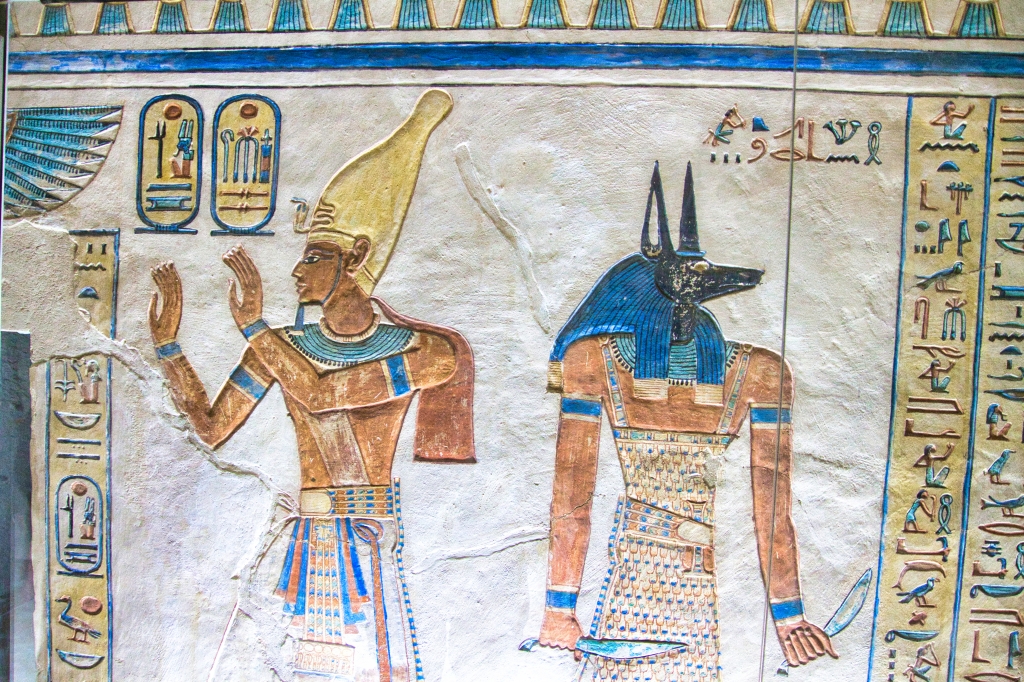
Photo by Galen C. Dalrymple, copyright 2024. All Rights Reserved.
Lest you think I’m critical of ancient Egyptian art, I’m not. I think it is in credible – not just the humongous statues and the exquisite hieroglyphic carvings, but the wall paintings inside the tombs of the pharaohs and other nobles. Today’s picture is one I shot inside one of the tombs in the Valley of the Queens near Luxor.
Look closely at the pharaoh (he’s the guy on the left in the image). Do you notice something strange about him? No, it’s not how he’s dressed, nor is it the crown he is wearing that identifies him as a pharaoh. Look very closely again. Do you see it now?
If not, here’s your clue: look at his hands. Both of his hands are identical with the thumb toward the outside. His left hand is properly configured, with the thumb on the inside, but not so with the right hand. Why is this? To be honest, I’d never noticed it until our tour guide pointed it out – and then everywhere I looked, this oddity was repeated over and over and over again.
Apparently, the Egyptians were great appreciators of symmetry. They liked things being equal and balanced. And so, they drew their art that way, and even many of the huge facades of the temples have exact symmetry in the images carved into their surface. There’s another oddity that I’ll point out tomorrow.
ON THIS DAY IN HISTORY: in 1637, during the Pequot War, an allied Puritan and Mohegan force under English Captain John Mason attacked a Pequot village in Connecticut, burning or massacring some 500 Native American women, men and children.
As the Puritans of Massachusetts Bay spread further into Connecticut, they came into increasing conflict with the Pequots, a tribe centered on the Thames River in southeastern Connecticut. By the spring of 1637, 13 English colonists and traders had been killed by the Pequot, and Massachusetts Bay Governor John Endecott organized a large military force to punish the local tribe. On April 23, 200 Pequot warriors responded defiantly to the colonial mobilization by attacking a Connecticut settlement, killing six men and three women and taking two girls away.
On May 26, 1637, two hours before dawn, the Puritans and their Native allies marched on the Pequot village at Mystic, slaughtering all but a handful of its inhabitants. On June 5, Captain Mason attacked another Pequot village, this one near present-day Stonington, and again the Native inhabitants were defeated and massacred. On July 28, a third attack and massacre occurred near present-day Fairfield, and the Pequot War came to an end. Most of the surviving Pequot were sold into slavery, though a handful escaped to join other southern New England tribes. – The History Channel
TRIVIA FOR TODAY: Termite queens live longer than any other insect. Some scientists estimate that they can live as long as 100 years.